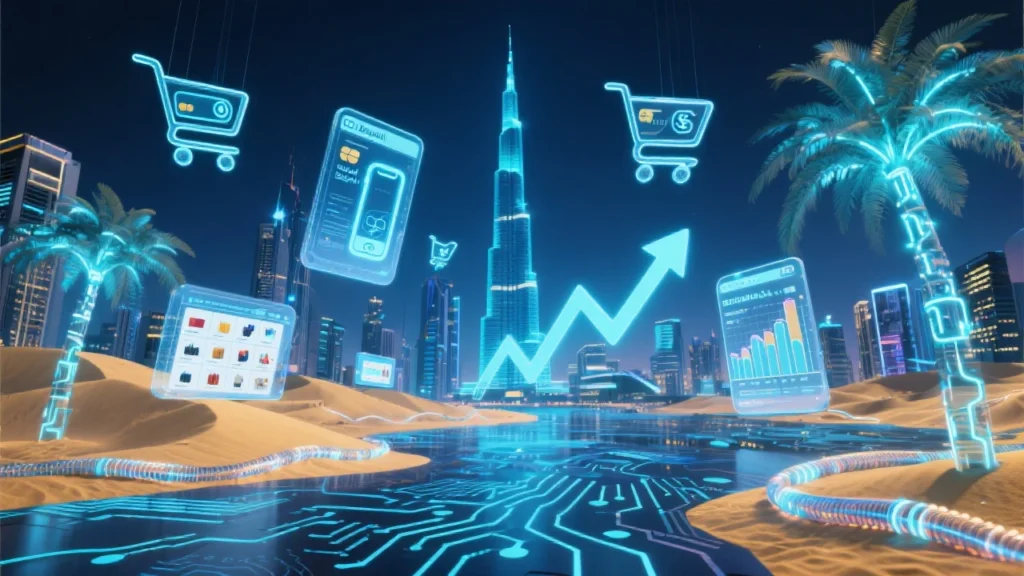Dubai, UAE – July, 2025 – The United Arab Emirates’ online market is experiencing a significant surge, solidifying its position as a leading e-commerce powerhouse in the Middle East and North Africa (MENA) region. Propelled by a tech-savvy population, high internet penetration, and a robust digital infrastructure, the nation’s e-commerce sector reached an estimated value of AED 32.3 billion (USD 8.8 billion) in 2024 and is on a trajectory to exceed AED 50.6 billion (USD 13.8 billion) by 2029.
This dynamic growth is underpinned by a confluence of factors, including evolving consumer behavior, an influx of residents from countries where e-commerce is the norm, the proliferation of advanced payment solutions, and strong government support for the digital economy.
Key Market Segments and Consumer Behavior
The electronics sector currently dominates the UAE’s online market, standing as the largest segment. However, fashion, furniture, and beauty & personal care are rapidly growing categories, indicating a diversification of online consumer spending. The average revenue per user (ARPU) is also on an upward trend, reflecting increasing consumer confidence and a higher frequency of online purchases.
A notable shift in consumer behavior is the move towards mobile commerce (m-commerce). The convenience of shopping on smartphones has made it the preferred method for a significant portion of the population. Furthermore, the demand for fast and efficient delivery has given rise to “quick commerce” or “q-commerce,” with companies promising delivery within hours or even minutes for groceries and other essentials.
In terms of payment methods, the UAE has witnessed a significant transition from a heavy reliance on cash-on-delivery (COD) to a preference for digital payments. Credit and debit cards remain popular, but there is a growing adoption of digital wallets and “Buy Now, Pay Later” (BNPL) solutions, offering consumers greater flexibility and convenience.
Several key trends are shaping the future of the UAE’s online market:
- Direct-to-Consumer (D2C) Model: An increasing number of brands are bypassing traditional retail channels to sell directly to consumers online, allowing for greater control over brand image and customer relationships.
- The Rise of Artificial Intelligence (AI) and Augmented Reality (AR): E-commerce platforms are leveraging AI for personalized recommendations and customer service, while AR is being used to enhance the shopping experience, allowing customers to virtually try on clothes or visualize furniture in their homes.
- Social Commerce: Social media platforms are becoming increasingly integral to the e-commerce journey, serving as powerful tools for product discovery, marketing, and even direct sales.
- Enhanced Cybersecurity: As the market grows, so does the importance of robust cybersecurity measures to protect consumer data and build trust, the major banks, in collaboration with the UAE government, are at the forefront of security enhancements.
A Mobile-First, AI-Influenced Consumer Landscape
The modern UAE consumer is digitally adept and increasingly reliant on mobile devices for online shopping. This “mobile-first” mindset has been a key driver of the m-commerce boom. Furthermore, a noteworthy trend is the growing influence of Artificial Intelligence (AI) in the shopping journey. Many consumers are now leveraging AI-powered tools for product discovery and personalized recommendations, highlighting a shift towards a more interactive and curated online experience.
Brand loyalty remains a significant factor, with consumers prioritizing quality, fast delivery, and seamless customer service. Retailers offering personalized experiences and hassle-free returns are more likely to capture and retain a loyal customer base.In terms of popular product categories, apparel and footwear continue to dominate online sales, closely followed by consumer electronics and home care products. This indicates a broad-based consumer trust in online platforms for a wide variety of goods
Sustainability: There is a growing consumer consciousness around environmental and ethical considerations, pushing online retailers to adopt more sustainable practices in their operations and product offerings.
Drivers and Challenges
The remarkable growth of the UAE’s online marketplace is underpinned by several key drivers, including a young and affluent population, strong government initiatives promoting digital transformation, and a business-friendly environment that attracts foreign investment.
However, the market is not without its challenges. Intense competition puts pressure on profit margins, while the complexities of last-mile delivery and logistics remain a critical area of focus. Additionally, the ever-present threat of cybersecurity breaches requires constant vigilance and investment in robust security measures to maintain consumer trust.
In conclusion, the UAE’s digital marketplace is a dynamic and flourishing sector with immense potential. As technology continues to evolve and consumer expectations shift, the ability to innovate and adapt will be crucial for businesses seeking to thrive in this exciting digital landscape.
Watch this space for further insights on the UAE’s marketing and business environment.

